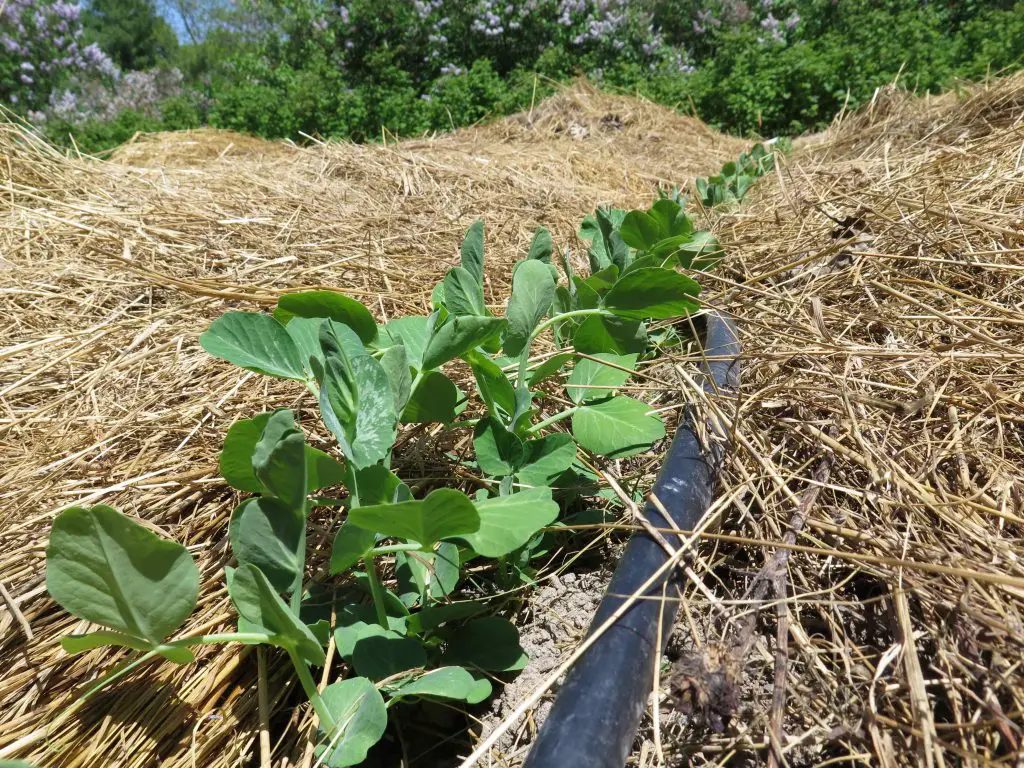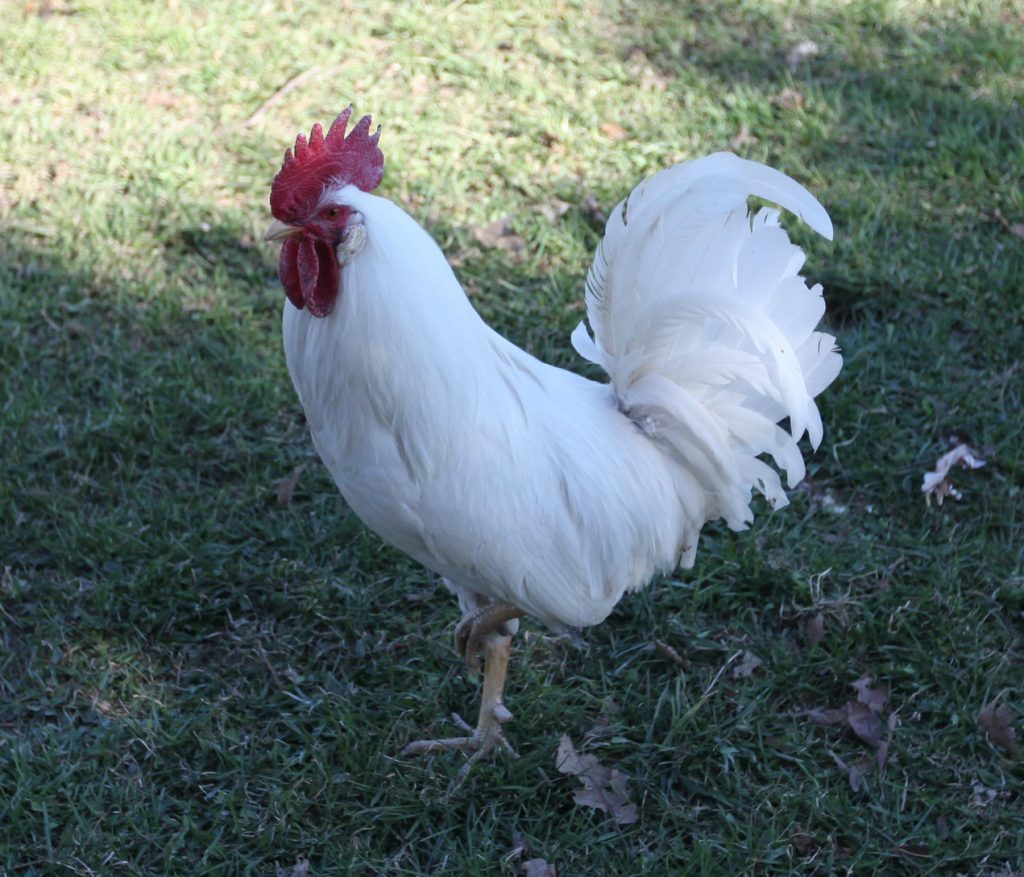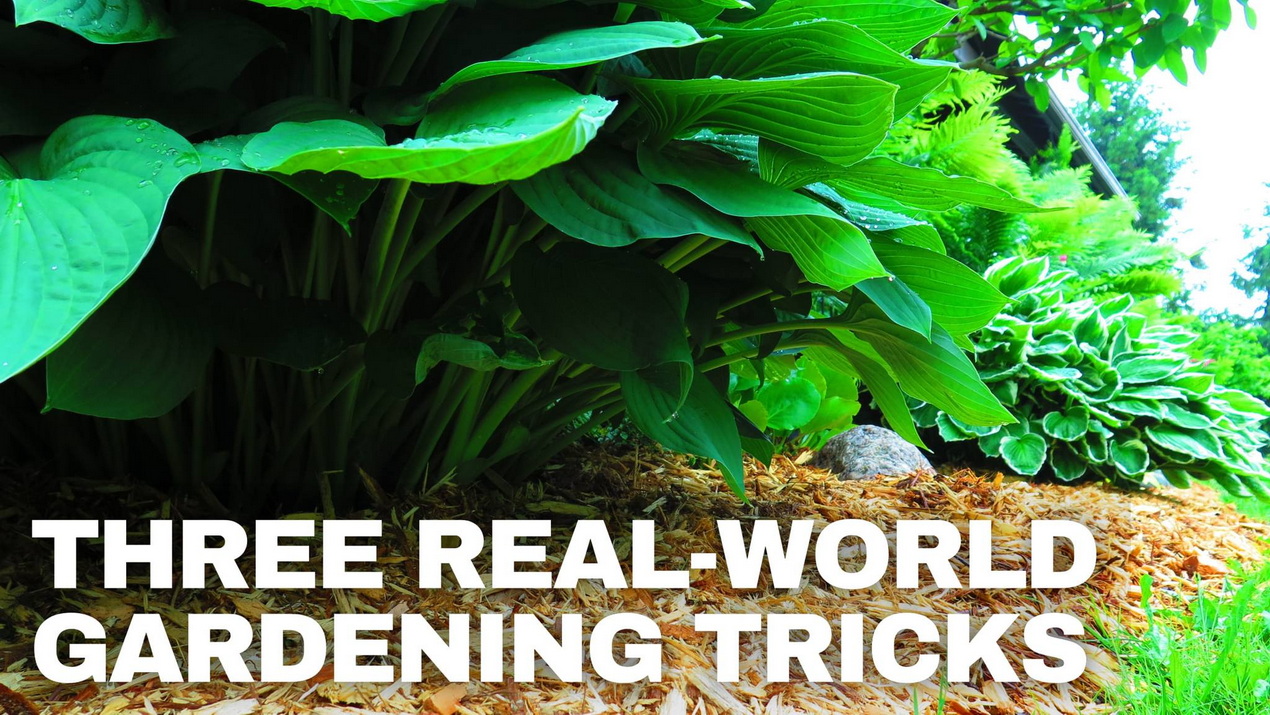My wife, Mary, and I have been gardening on our rural property for 30-plus years and, whenever you’re at something for this long, you pick up a few good ideas. Here are three not-too-common gardening tricks that work really well for us: mulched vegetables; water-soluble fertilizers; and chicken garden plots.
Before I get started, check out this video tour of our flower gardens from 2015:
Mulch-intensive vegetables
We began mulching our perennial flower gardens heavily in the early 1990s, and that’s been a great thing. But this also works with vegetable gardens if you do it right. I call it the no-till vegetable approach. The garden itself is permanently mulched using thick, shredded cedar bark or weed-free straw to eliminate weeds, hold moisture and build organic matter in the soil over time.
Instead of tilling the whole garden in the spring, as I usually do, I rake back the mulch in a row that’s just wide enough for the rototiller, plant seeds or transplants, then rake the mulch back over the growing vegetables as they get bigger.

Weed suppression and water retention are the obvious benefits, but I know from our flower gardening experience that organic matter and microbe life in the soil skyrockets after three or four years of constant woody mulch cover. Earth worms get almost as big as your thumb, which is obviously a great thing.
Water-soluble plant food
Mary is the real flower gardener in our household. I handle the vegetables, small fruits, apples and heavy work. And if there’s one thing people say about Mary’s flower gardening, it’s how well the colour and blooms hang on into the summer and fall.
Part of this has to do with the water-holding ability of the silty clay loam at our home on Manitoulin Island, but a bigger part of our success is also about fertility — water-soluble fertility, in particular.
For years, our flower gardens started to fade towards the middle of August, like many do. This was especially true when it came to hanging baskets and pots. We thought it was related to water, but it turns out there’s more to it than this.
Ample watering alone didn’t completely solve the problem. Quite by accident we noticed a huge improvement the first year we got intentional about feeding our flower gardens regularly throughout the season. And there was an even bigger improvement when we started using water-soluble plant food every two weeks on a schedule. Longer lasting blooms and healthier plants in the second half of the season were the obvious benefits.

Our gardens are large, and when I first started with the whole water-soluble plant food thing I bought it in powder form, in commercial quantities meant for the greenhouse industry. For a number of years, I tested various specialty and professional brands to see what worked best.
We haven’t found anything that works better than the Scotts Miracle-Gro you get in hardware stores. We started with their powdered product but have since settled on LiquaFeed that works with a special nozzle on the end of a garden hose.
It lets you cover more ground in less time than powders, and this means we end up getting the benefits of water-soluble feeding over more of our gardening area each year. It’s surprising just how much of a labour saver the liquid version is compared to powder. We’d never go back to dissolving powder for liquid feeding, but I am looking to try testing some Shake ’n Feed slow-release granular fertilizer to see how it works.
Chicken-tilled garden beds

We’ve never had any trouble with insects in our garden, except slugs. They’re always present, and they especially like hostas. Wet summers are worse than dry, but slugs are always there. They’re never so bad that they ruin entire plants, but who wants even a few small leaf holes if you can avoid it?
We’ve tried surrounding slug-favoured plants with woven copper mesh (too expensive and troublesome), but there’s another option. We keep a backyard flock of a dozen Leghorn hens (and one noble and brave rooster named Foghorn, pictured above) and, when the snow left and the perennials had yet to emerge, we let the chickens roam free over the mulched gardens before plants come to life.
They kicked up quite a fuss in the gardens and were profoundly interested in eating something deep in the mulch. Whether these are slug eggs or over-wintered slugs, time will tell.
How will the mulched vegetable garden work? Will the chickens reduce slug presence? How good will the blooms be this year with extended feeding?
Anticipation is one of the first fruits of any garden that you care about. And when it comes down to it, isn’t “care” the first and most important ingredient in any garden?


